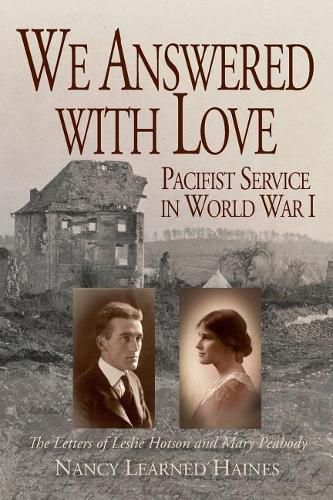Readings Newsletter
Become a Readings Member to make your shopping experience even easier.
Sign in or sign up for free!
You’re not far away from qualifying for FREE standard shipping within Australia
You’ve qualified for FREE standard shipping within Australia
The cart is loading…






This title is printed to order. This book may have been self-published. If so, we cannot guarantee the quality of the content. In the main most books will have gone through the editing process however some may not. We therefore suggest that you be aware of this before ordering this book. If in doubt check either the author or publisher’s details as we are unable to accept any returns unless they are faulty. Please contact us if you have any questions.
In America, 1918 was a time of idealism and duty. Young men joined the military, eager to fight the German menace. Women raised money to support the troops and worked in munition factories. Patriotism was at a fevered pitch.
But not everyone believed in the rightness of war. Leslie Hotson’s conscience led him to go to France with the American Friends Service Committee to repair the wounds of war. Mary Peabody worked to change conditions at home as a radical socialist and anti-war activist. Both hoped that their love of mankind would lead them to living out their highest ideals.
Their correspondence is a compelling story of two college students engaged in the sacrifice and adventure of participating in a noble cause. They share a first-hand commentary on events in France and America, as experienced by thoughtful young people opposed to the war. Leslie writes of the devastation in France, the work of the Quakers in rebuilding destroyed neighborhoods, and the persecution of conscientious objectors, including his brother, who were drafted but refused to fight. Mary’s letters tell of the Harvard campus being taken over by the Navy, the Spanish influenza epidemic which ravaged the country, suffrage and radical activities, and the disturbing rise of political conservatism after the Armistice. They also talk about poetry, literature, friends, and their day-to-day activities. The letters are a delightful, romantic story of friendship turning to love.
$9.00 standard shipping within Australia
FREE standard shipping within Australia for orders over $100.00
Express & International shipping calculated at checkout
This title is printed to order. This book may have been self-published. If so, we cannot guarantee the quality of the content. In the main most books will have gone through the editing process however some may not. We therefore suggest that you be aware of this before ordering this book. If in doubt check either the author or publisher’s details as we are unable to accept any returns unless they are faulty. Please contact us if you have any questions.
In America, 1918 was a time of idealism and duty. Young men joined the military, eager to fight the German menace. Women raised money to support the troops and worked in munition factories. Patriotism was at a fevered pitch.
But not everyone believed in the rightness of war. Leslie Hotson’s conscience led him to go to France with the American Friends Service Committee to repair the wounds of war. Mary Peabody worked to change conditions at home as a radical socialist and anti-war activist. Both hoped that their love of mankind would lead them to living out their highest ideals.
Their correspondence is a compelling story of two college students engaged in the sacrifice and adventure of participating in a noble cause. They share a first-hand commentary on events in France and America, as experienced by thoughtful young people opposed to the war. Leslie writes of the devastation in France, the work of the Quakers in rebuilding destroyed neighborhoods, and the persecution of conscientious objectors, including his brother, who were drafted but refused to fight. Mary’s letters tell of the Harvard campus being taken over by the Navy, the Spanish influenza epidemic which ravaged the country, suffrage and radical activities, and the disturbing rise of political conservatism after the Armistice. They also talk about poetry, literature, friends, and their day-to-day activities. The letters are a delightful, romantic story of friendship turning to love.